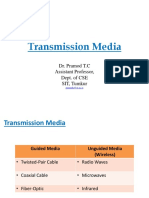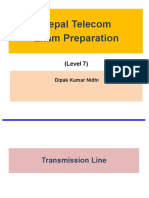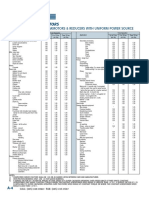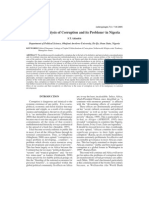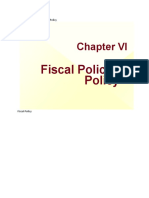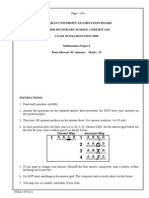Computer Network
(EC503)
For B.Tech. 5th Semester
Lecture-3
Topic: Transmission Media
(Guided)
By
Dr. Kaushik Roy
Associate Professor
ECE Department, GNIT
� Transmission Media
A transmission medium can be broadly defined
as anything that can carry information from a source
to a destination. In data communications the
definition of the information and the transmission
medium is more specific.
The transmission medium is usually free space,
metallic cable, or fiber-optic cable. The information
is usually a signal that is the result of a conversion of
data from another form.
� Types of
Transmission Media
� Guided Media
Guided media, which are those that provide a conduit
from one device to another, include twisted-pair cable,
coaxial cable, and fiber-optic cable. A signal travelling
along any of these media is directed and contained by the
physical limits of the medium.
1) Coaxial Cable
2) Twisted Pairs Cable
3) Fiber Optics Cable
Twisted-pair and coaxial cable use metallic (copper)
conductors that accept and transport signals in the form
of electric current. Optical fiber is a cable that accepts
and transports signals in the form of light.
� Twisted Pair Cable
A twisted pair consists of two conductors (normally
copper), each with its own plastic insulation,
twisted together, as shown in Figure. One of the
wires is used to carry signals to the receiver, and the
other is used only as a ground reference. The
receiver uses the difference between the two
� Unshielded twisted pair (UTP)
UTP is more common. It
can be either voice grade
or data grade depending
on the condition. UTP
cable normally has an
impedance of 100 ohm.
UTP cost less than STP and
easily available. Maximum
data rate in UTP is 100 Kbps
.
� Shielded twisted pair (STP)
STP cable has a metal
foil or braided mesh
covering that encases
each pair of insulated
conductors. Although
metal casing improves
the quality of cable by
preventing the
penetration of noise or
crosstalk, it is bulkier
and more expensive.
� Coaxial cable
Coaxial cable (or coax) carries signals of higher frequency
ranges than those in twisted paircable as the two media
are constructed differently. Instead of having two wires,
coax has a central core conductor of solid or stranded
wire (usually copper) enclosed in an insulating sheath,
which is, in turn, encased in an outer conductorof metal
foil, braid, or a combination of the two.
� Fiber optic cable
A fiber-optic cable is made of glass or plastic and transmits
signals in the form of light. To understand optical fiber, we
first need to explore several aspects of the nature of light.
Light travels in a straight line as long as it is moving
through a single uniform substance. If a ray of light travelling
through one substance suddenly enters another substance (of
a different density), the ray changes direction.
� Optical Fiber construction
⚫ Optical fibers use reflection to guide light through a
channel. A glass or plastic core is surrounded by a
cladding of less dense glassor plastic. The difference in
density of the two materials must be such that a beam
of light moving through the core is reflected off the
cladding instead of being refracted into it.
� Propagation modes
⚫ Current technology supports two modes (multimode
and single mode) for propagating light along optical
channels, each requiring fiber with different physical
characteristics. Multimode can be implemented in two
forms: step-index or graded-index.
⚫ Multimode is so named because multiple beams from
a light source move through the core in different paths.
� Multimode: Step-index
⚫ In multimode step-index fiber, the density of the core
remains constant from the center to the edges. A beam of
light moves through this constant density in a straight
line until it reaches the interface of the core and the
cladding. At the interface, there is an abruptchange due
to a lowerdensity; this alters the angle of the beam's
motion.
�Multimode: Graded-index
A second type of fiber, called multimode graded-
index fiber, decreases this distortion of the signal
through the cable. The word index here refers to the
index of refraction. The index of refraction is related
to density. A graded-index fiber, therefore, is one
with varying densities. Density is highest at the
center of the core and decreases gradually to its
lowest at the edge.
� Single Mode
⚫ Single-mode uses step-index fiber and a highly focused
source of light that limits beams to a small range of angles,
all close to the horizontal. The single mode fiber itself is
manufactured with a much smaller diameter than that of
multimode fiber, and with substantially lower density
(index of refraction). The decrease in density results in a
critical angle that is close enough to 90° to make the
propagation of beams almost horizontal.
�Advantages of Optical Fiber
⚫ Higher bandwidth
⚫ Less signal attenuation
⚫ Immunity to electromagnetic interference
⚫ Resistance to corrosive materials
⚫ Light weight
⚫ Greater immunity to tapping
� Disadvantages of
Optical Fiber
⚫ Installation and maintenance
⚫ Unidirectional light propagation
⚫ Cost
� Reference Books
1) B. A. Forouzan, Data Communication and Networking,
Tata Mc-Graw Hill.
2) W. Stallings, Data and Computer Communication, 5th
Ed. Prentice-Hall India.
3) A. S. Tanenbaum, Computer Networks, Prentice-Hall
India.
�THANK YOU

